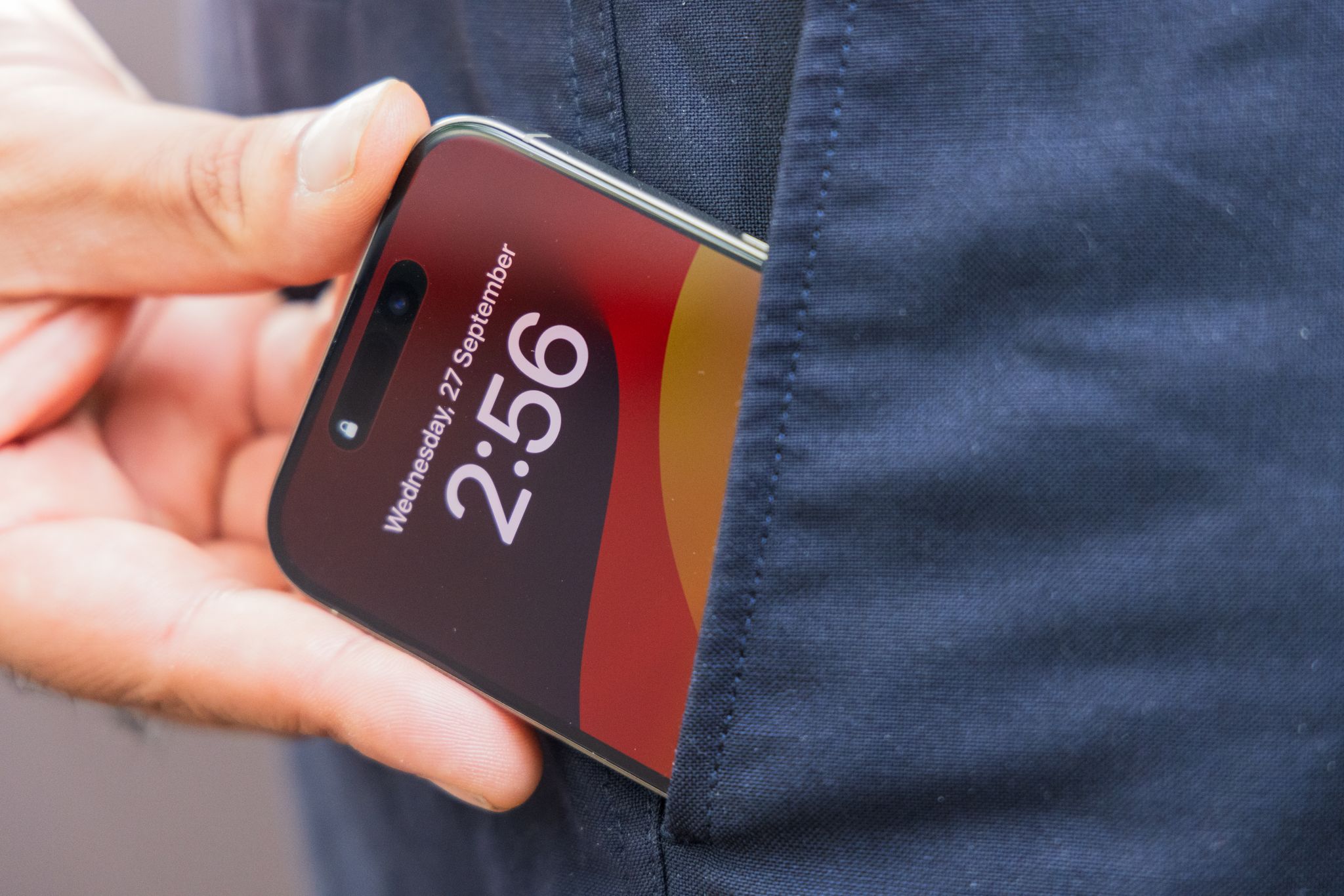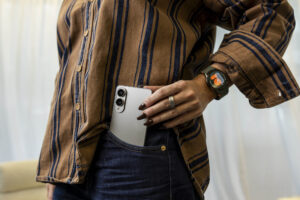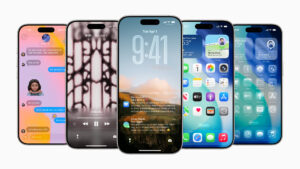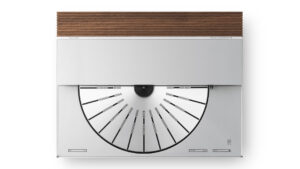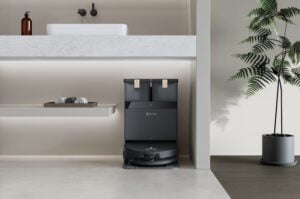Is the iPhone 15 Pro a good phone? Yes.
But that was to be expected.
One of Apple’s biggest upgrades in the past few years to its flagship smartphone stretches beyond whether or not the phone is good or bad. That’s not the debate here; the real metric of success is whether Apple is moving the conversation about smartphones forward, or just feeding us a few trivial iterative upgrades to go with the motions.
And with the iPhone 15 lineup, I genuinely feel like Apple has put in much more effort than the company did with the standard leap between the 13th and 14th generations. The two iPhone 15 Pro models represent Apple’s reputation for pushing the sector forward.
Some features are little more than the tech giant “catching up” with Android, while others are great insights into how the company is trying to constantly reinvent itself and push smartphone technology to think differently.
As it stands, the major changes you’ll find with the iPhone 15 Pro, which is the model I chose for this review, include:
- Titanium design
- Programmable Action button
- Switch to USB-C
- A17 Pro chipset
I guess the biggest compliment I can give Apple right now is that the iPhone 15 Pro is, as long as you can justify the price tag, worth the upgrade from the iPhone 14 Pro. Last year I stated that there was little point in buying the iPhone 14 Pro if you already have an iPhone 13 Pro. So the fact that Apple has created a flagship that’s worth a look even if you have the most recent predecessor speaks highly for the company.
iPhone 15 Pro
Excellent
83/100
SCOREPROS
- Action button has great potential
- Brighter display is much easier to view on sunny days
- Titanium design is incredibly light and feels more premium
- Slimmer bezels help make display really pop
- Incredibly fast
- Smarter photo editing tools
CONS
- Still very expensive
- USB-C charging isn’t any faster
- Battery life still seems quite short
- Cameras still fall short of high-end Android phones
Jump To:
iPhone 15 Pro: Price In Australia
Let’s get the price out of the way first because, as you can see from the table below, it’s a big factor in appraising the value of the iPhone 15 lineup. Compared to the previous generation, the base models (iPhone 15 and iPhone 15 Plus) have been priced competitively, while the Pro models (iPhone 15 Pro and iPhone 15 Pro Max) see a significant bump, right up to the most expensive model at $2,899.
That said, the difference between a 128 GB iPhone 15 and 128 GB iPhone 15 Pro is $350. And I’d say the Pro features are well worth forking out the extra cash.
Although you’ll want at least 256 GB if you’re going to be making the most of those 48 MP ProRAW shots and ProRes video capture.
| Phone | RRP |
| iPhone 15 (128 GB) | $1,499 |
| iPhone 15 (256 GB) | $1,699 |
| iPhone 15 (512 GB) | $2,049 |
| iPhone 15 Plus (128 GB) | $1,649 |
| iPhone 15 Plus (256 GB) | $1,849 |
| iPhone 15 Plus (512 GB) | $2,199 |
| iPhone 15 Pro (128 GB) | $1,849 |
| iPhone 15 Pro (256 GB) | $2,049 |
| iPhone 15 Pro (512 GB) | $2,399 |
| iPhone 15 Pro (1 TB) | $2,749 |
| iPhone 15 Pro Max (256 GB) | $2,199 |
| iPhone 15 Pro Max (512 GB) | $2,549 |
| iPhone 15 Pro Max (1 TB) | $2,899 |
Design
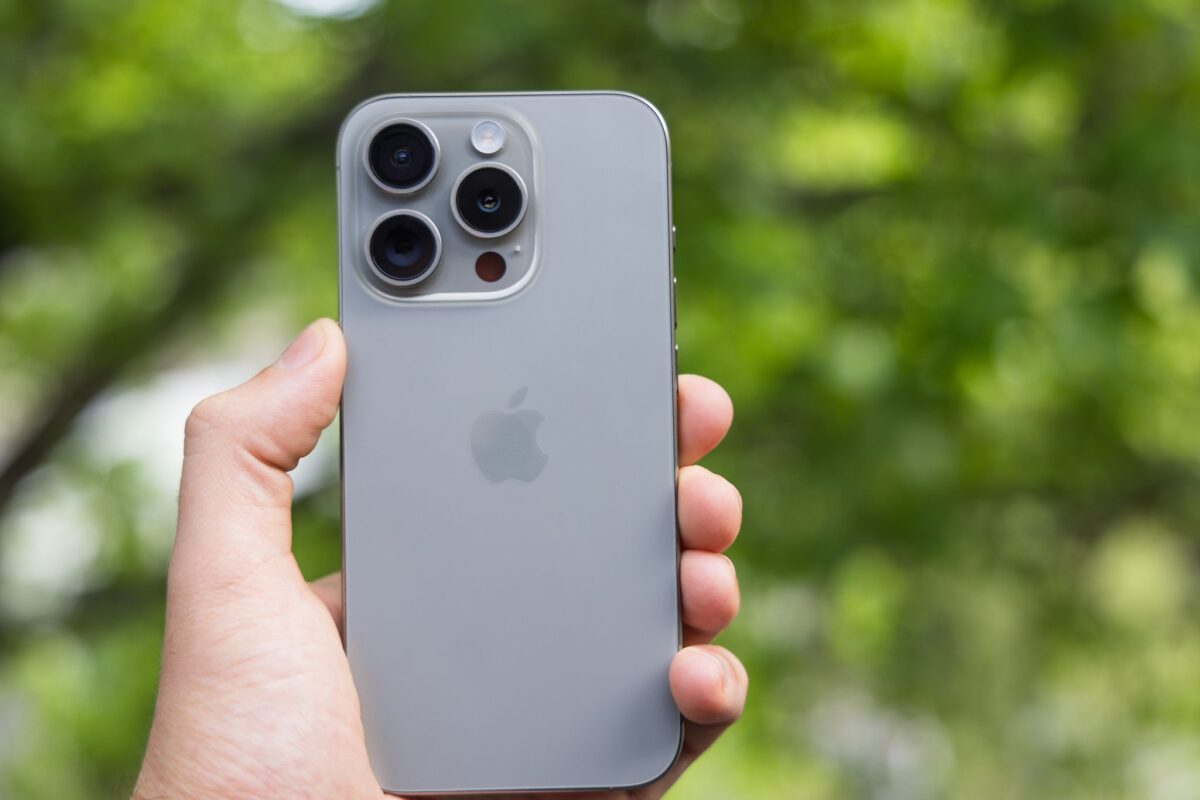
The most notable design change for the iPhone 15 Pro models is that the frame is now made of titanium instead of stainless steel. Titanium is not only a stronger, more durable metal, but it’s renowned for its lightweight properties. Importantly, Apple has found a way to blend titanium and aluminium, the latter of which has better thermal dissipation qualities. Maximising the benefits of both metals gives Apple an edge when it comes to build quality.
The iPhone 14 Pro weighs 206g while the iPhone 15 Pro shrinks that to 187g. A 9% difference isn’t impressive on paper but it’s a massive feat of engineering, and I can really feel the difference when I hold both models in either hand. It’s something not even the hardiest of Android fans could deny, so Apple deserves a bit of applause here.
Display
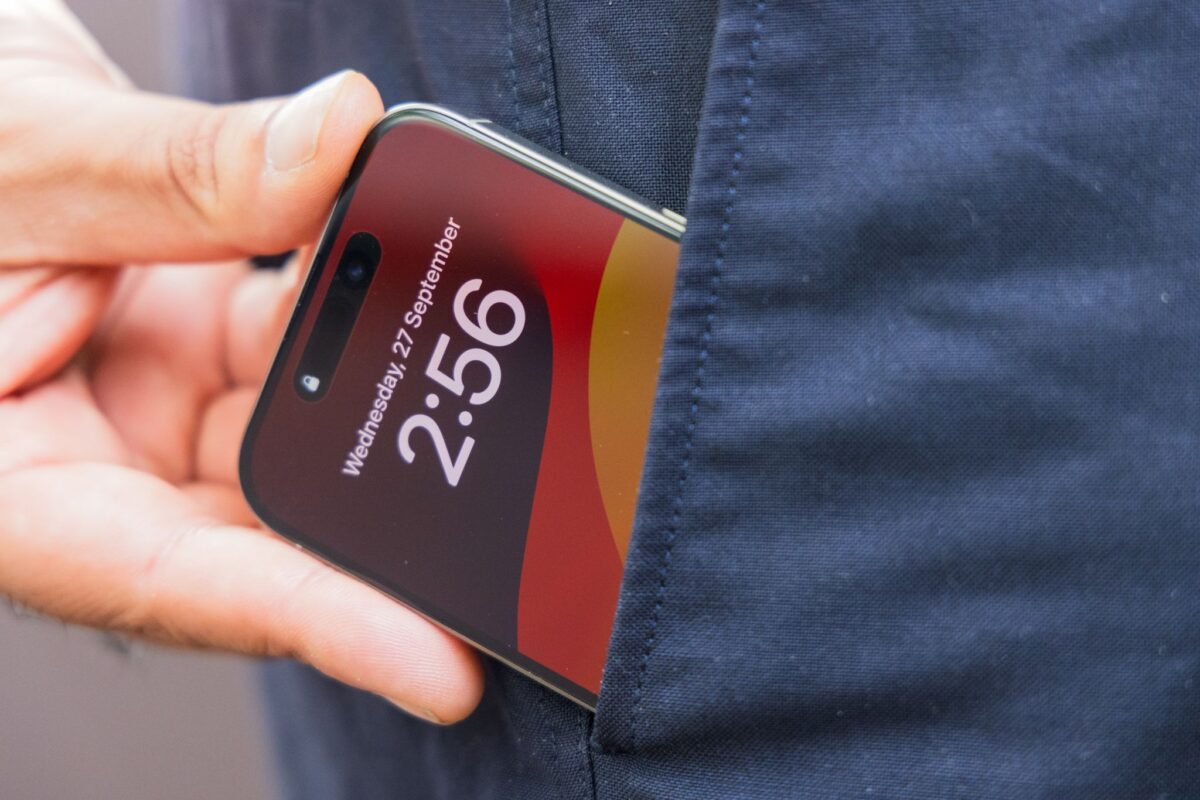
A new build also means a slightly cleaner look to the phone, helped by noticeably slimmer bezels. It makes the 6.1-inch Super Retina XDR display pop with its smooth 120 HZ adaptive refresh rate and a substantial max brightness of 2,000 nits. The colours on the display look natural and very detailed. I’m mostly impressed by how good skin tone looks once a photo is taken, with texture looking as true-to-life as it would if I had just taken a portrait with the Pixel 7 Pro.
But more on the cameras below.
Along with the slimmer bezels, Apple has redesigned the edges so now you have a well-rounded, contoured design as opposed to edges that are slightly squared off. Not a massive difference, but it does make the iPhone 15 Pro more comfortable in my hand.
USB-C
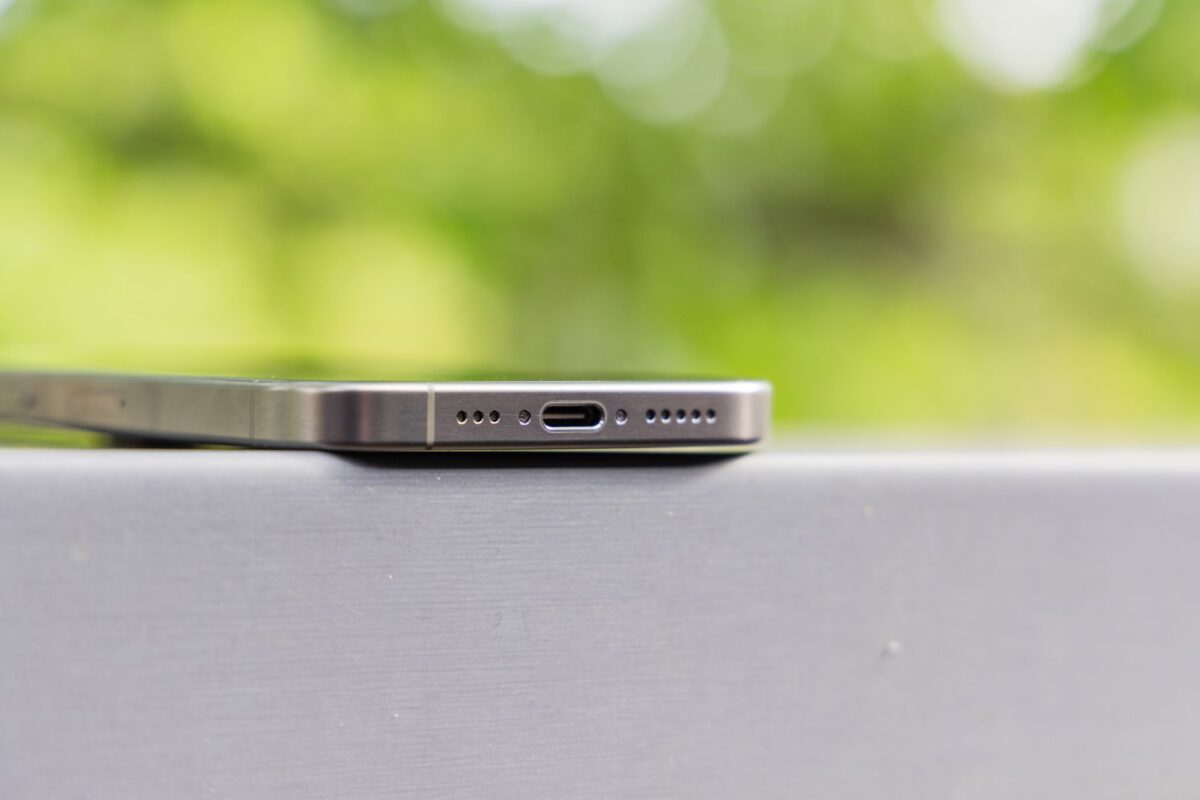
One of the biggest changes is the jump from Lightning connector to USB-C. Apple’s hand was forced by the European Union, who are attempting to standardise all cables to USB-C, but the move was inevitable at some point anyway. This is because UBS-C is vastly superior to Lightning, both when it comes to data transfer speeds and charging speeds.
Despite that, the charging speeds still seem more or less than the same with the 15 Pro as they do with my 14 Pro. That is disappointing, but the Pro also uses USB 3.0, which can transfer up to 10 GB per second. That’s significantly better than the USB 2.0 that the 15 base models use.
The USB-C port also means you can easily charge other Apple devices with your phone. So for the first time, you can actually use your iPhone as a power bank for something like your AirPods. However, I still don’t think the battery itself is large enough to warrant being used as a power source while also holding onto enough charge to get you through the day.
Action Button
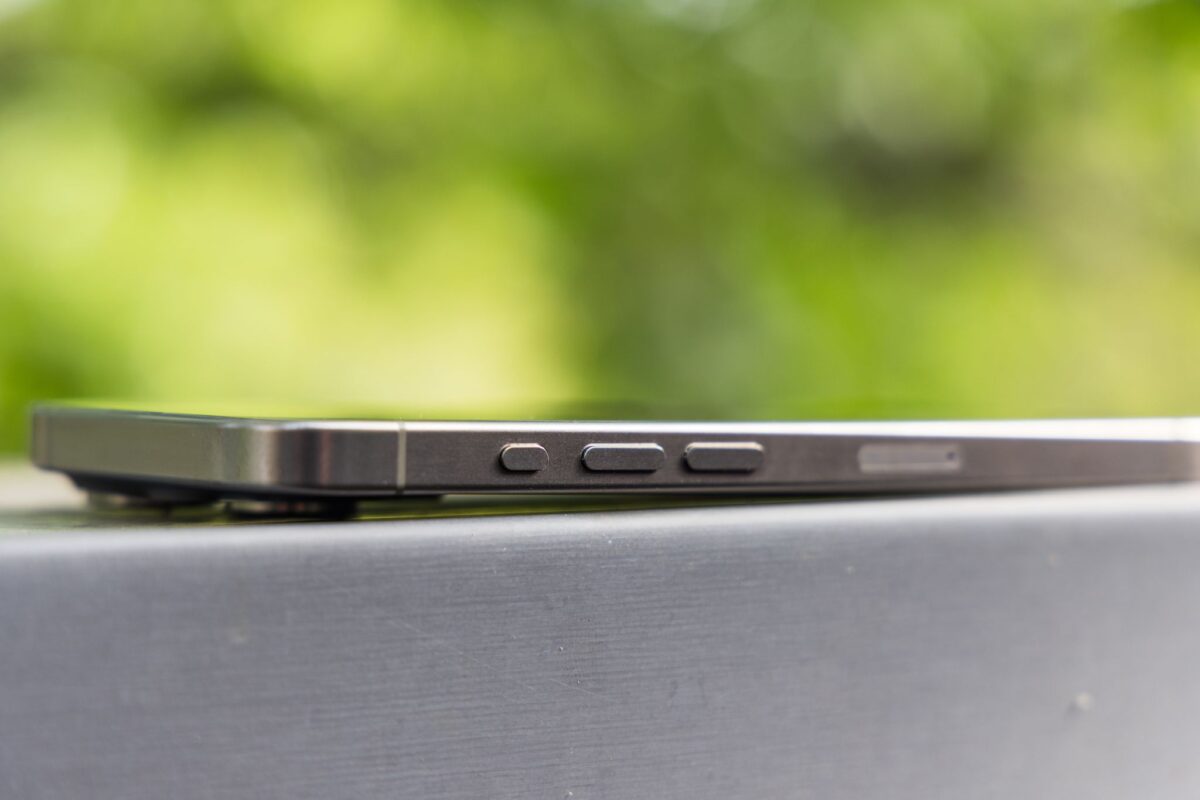
For most users, the Action button isn’t going to be a big deal. But anyone deeper into the Apple ecosystem could make the Action button one of the most significant design changes Apple has undertaken in the company’s history.
That’s because you can program the Action button, which replaces the long-standing mute switch, to do just about anything you want. Long press the Action button, which sits above the volume buttons on the left-hand side of the phone, and it can do anything from automatically bringing up the Camera app, to turning on the flashlight, recording a voice memo or opening a quick pop-up from Notes so you can type something in on the fly.
These sorts of physical shortcuts are there just to make incremental changes to the user experience, but they are appreciated nonetheless. When it comes to iterative product lines like smartphones, shaving a few seconds of effort does end up making a big difference.
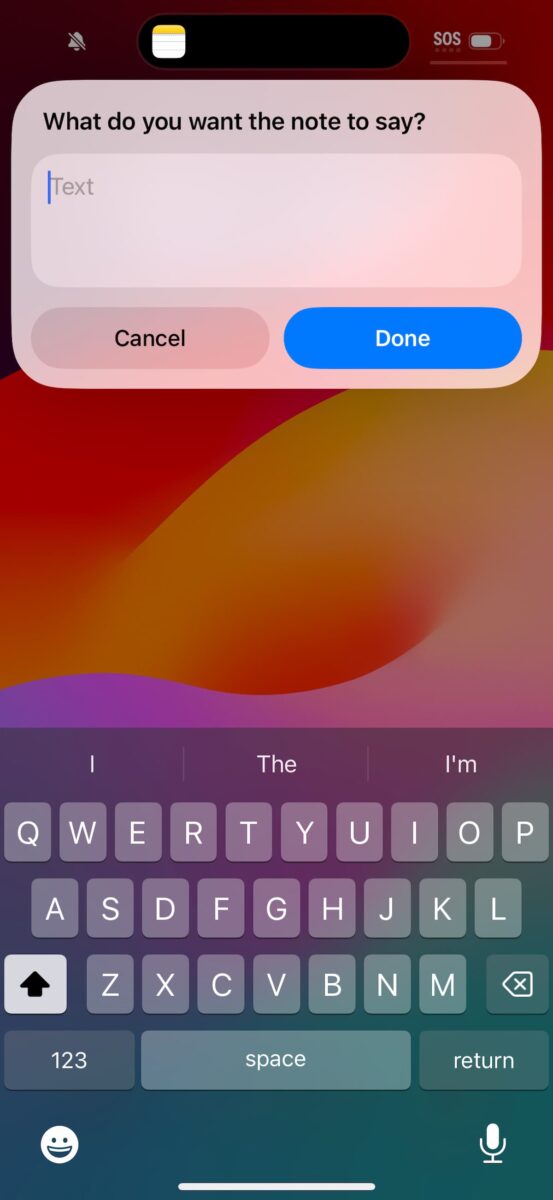
The best Action button use case would be having everything connected to the phone like your Apple Watch, AirPods, HomePod and bedroom lights. A quick long press when you get into bed to turn your room into “sleep mode” would make anyone feel they’ve just found an epic life hack.
Apple has also found a way to incorporate Dynamic Island with the Action button’s functionality. Short press the Action button and you’ll get a little animation in the Dynamic Island notch indicating what the programmable button is mapped to. Again, not huge but it’s a nice way to take last year’s more trivial Pro feature and further its functionality.
I’ve currently got my Action button mapped to open the Notes app quickly. Given I’m not travelling right now, it’s less relevant. But when I’m on research trips, I like to take as many notes as possible. Having a button to quickly bring up Notes will just help with efficiency.
Performance
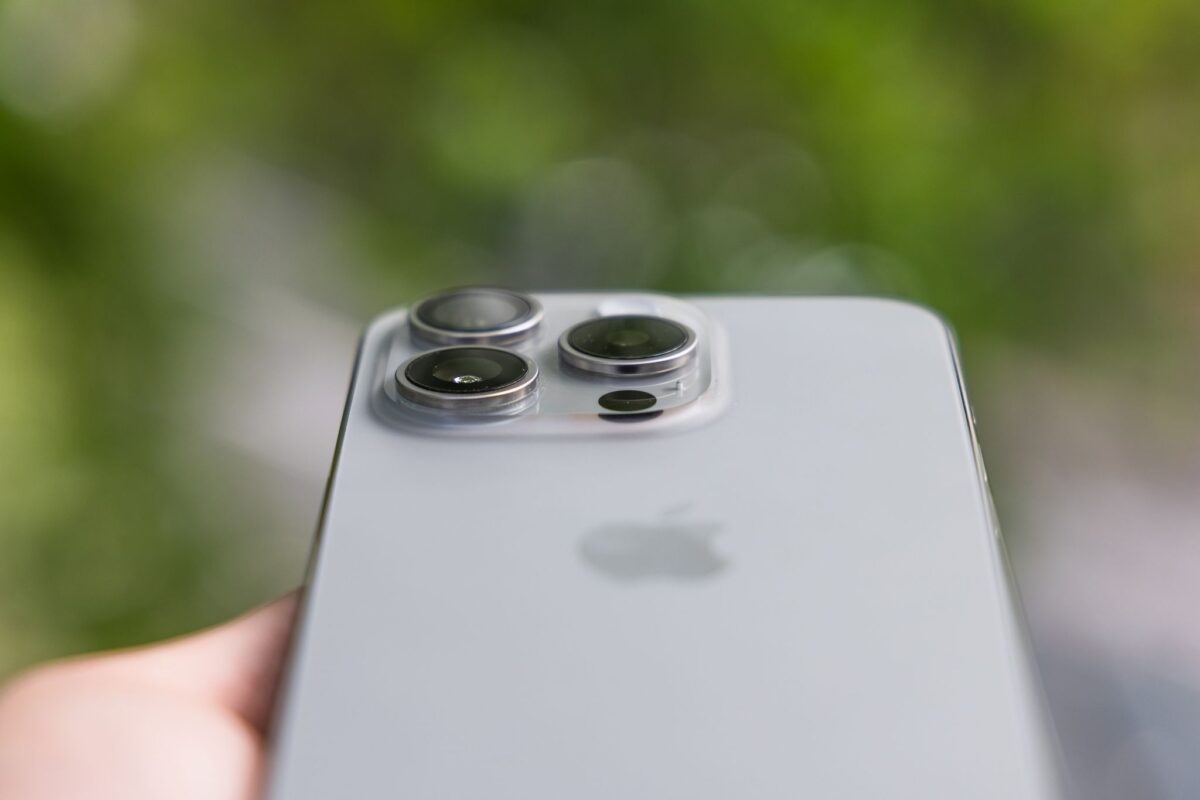
The A17 Pro chip is an absolute beast on paper so it’s perfectly reasonable for Apple to be pushing its new flagship Pro phones as high-end gaming devices. I wouldn’t go so far as to put the iPhone on the same level as premium gaming phones like the Asus ROG Phone 7 Ultimate, but the considerable boost in both speed and graphics processing makes me confident I could play something like Resident Evil 4 on this phone and actually enjoy it.
Apple is most likely going to double down on pro-gaming features for subsequent generations, but for now, I’d say it’s a job well done.
That being said, I haven’t spent enough time with my iPhone 15 Pro to really advance with any games. I’ve merely skimmed more graphics-intensive titles to see how the phone handles these heavy loads. And it chews through them with ease. Even if the iPhone 14 Pro I’d notice the stuttering with more intensive workloads. With the 15 Pro, it’s smooth sailing and the graphics don’t take a hit.
That’s more than enough to tell me that the A17 Pro is a notable improvement over previous Apple silicone. However, the Greekbench scores aren’t as impressive as they could have been. I’ve only used the iPhone 15 Pro for a few days, so I have little doubt that as time progresses I’ll be less and less impressed by the chip. Assuming the Geekbench scores are accurate, which they almost always are.
The small bump in memory also makes a difference. The iPhone 14 Pro had 6 GB RAM but the 15 Pro switches that up to 8 GB. That’s double the minimum of what a high-end smartphone would need, meaning I would run into absolutely no issue with multitasking or anything more labour-intensive than having a few apps open at once. This combined with the display’s 120 Hz refresh rate helps make everything move much smoother.
That said, only power users tend to notice lag at the upper limits of a phone’s capacity, but most people won’t find any issues with the processing power.
As for battery, Apple famously never release details on the actual size of the battery in any of its phones. That said, the A17 Pro chip should theoretically be able to milk a longer battery life despite no size changes. That isn’t apparent to me. I would get just over 9 hours on the few times I tested battery life, which falls short of competitors and doesn’t exactly fill me with confidence.
If only Apple made a MagSafe charging pack that actually had decent capacity rather than whatever we have on the market. You shouldn’t have to travel with a power bank anymore.
Cameras
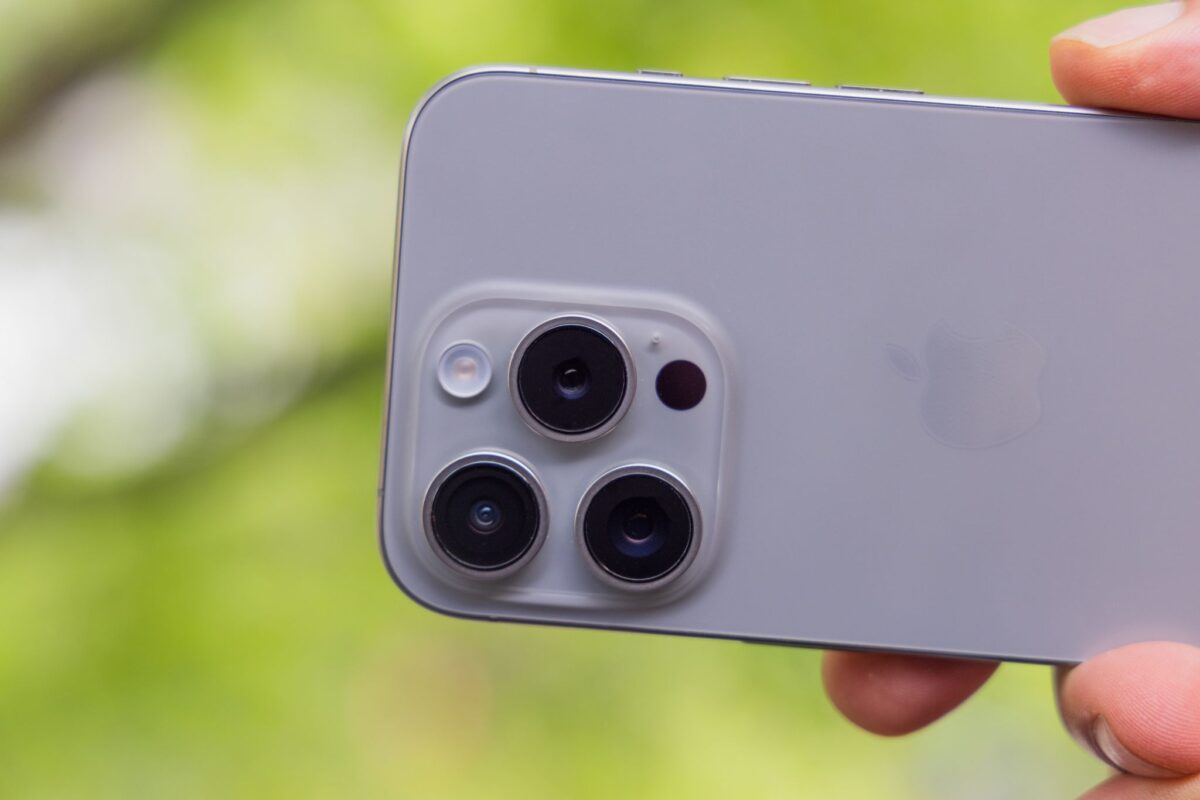
On the rear, Apple has worked on the following camera array.
- 48 MP (f/1.78)
- 12 MP Ultra Wide (f/2.2)
- 12 MP 2x Telephoto (f/1.78)
Apple has improved the Pro’s main 48 MP sensor, which leads the three lenses on the rear and can now shoot 24 MP photos by default. You can still snap a 48 MP shot with ProRAW, but it does take a ridiculous amount of storage.
For example, I just took a ProRAW shot with both the iPhone 14 Pro and the same with the iPhone 15 Pro. The size from the 14 Pro shot is 45 MB and the same shot from the 15 Pro is 55.3 MB. Bigger file size, but it also captures more detail and auto-adjusts to account for natural light. The same photo from the 14 Pro looks a bit washed out with the sun peering in through a window. The 15 Pro has more natural colours across the board.
Macro shots are incredible and capture an impressive amount of detail with crisper, cleaner details than similar shots from my Google Pixel 7 Pro. And I typically find the Pixels are much better when it comes to close-up shots. That’s a big tick for Apple as the company has finally caught up with Android when it comes to modes like Portrait and Macro.
Portrait is also vastly improved. Notably, editing after the photo is taken is easier and shifting the focus to whatever you want works much better. In fact, it seems Apple has improved the post-production process across the board, with both photo and video benefitting.
The above portrait of Boss Hunting’s founder Jack Slade compares results from the iPhone 15 Pro and the Google Pixel 7 Pro. As you can see, both are very impressive but the iPhone 15 Pro’s bokeh is more aggressive and the focal length is wildly different (they were taken from the exact same distance). I prefer the Pixel 7 Pro’s richer details, but Jack’s shirt looks overly processed and the background is washed out.
The white on the walls behind Jack also look more natural in the iPhone photo. It seems the iPhone 15 Pro is still more sensitive to light, which is a good thing as you have a wider range of results. The Pixel 7 Pro’s processing is still incredibly impressive, but it does overshoot.
I usually use my Pixel to take food photos as I find it works much better. Now, I’m sure the iPhone 15 Pro will do just as good of a job when I’m dining out.
In the above image, it’s clear the iPhone 15 Pro (by default; I only shoot on default settings for reviews) is much more aggressive when it comes to the bokeh effect. Both results are very satisfying but the iPhone is much better at lifting the richer textural details on the woodgrain.
Night Mode gets a swift boost from Apple’s Photonic Engine for even better results than before. Apple has always been behind Android when it comes to cameras, so it’s nice to see the company finally step up with more than just a really good ProRAW mode.
Comparing the results of Night Mode with my Pixel 7 Pro is a revelation. I’ve always favoured Google for its post-processing, leading to the best low-light results in the game. That changes here. Apple’s results look much more natural and richer in detail, especially in shadows.
Zoom is another big focus for Apple moving forward, it seems. However, the Pro Max is the best illustration of that. The biggest iPhone 15 model has a new tetraprism lens which allows for a beastly 5x optical zoom. We have a Pro Max unit as well, but for the purpose of this review, I wanted to focus on the Pro only.
In the below image, I’m comparing the wide-angle shot from both the iPhone 14 Pro and the iPhone 15 Pro. Same focal length but you may be able to see that the most distant trees look slightly over-processed and darker with the 14 Pro. The leaves are more natural with the 15 Pro.
From that, it seems that the processing is much less overactive and more measured. It’s also faster, making quick use of that A17 Pro and its immense speed.
Verdict & Value
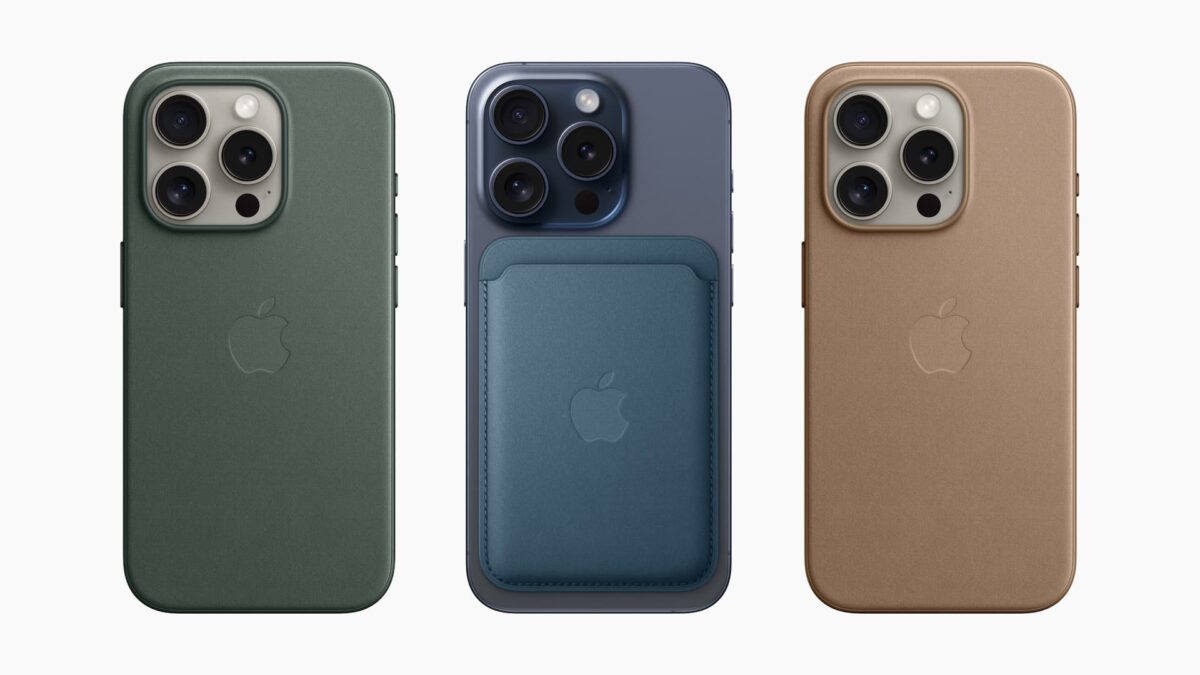
Anything less than 256 GB is not enough considering how powerful the cameras are. Especially if you’re using them to capture Pro Res video. As such, you’re looking at a price tag of at least $2,049 if you want the iPhone 15 Pro and you aren’t taking advantage of any Apple trade-in deals.
Has Apple done enough to warrant this kind of price tag? I do actually think so. Disregard the fact that you’re paying a premium to own an Apple device, but the company has also switched things up with meaningful upgrades this time as opposed to middling iterative ones.
That said, I’m reviewing this phone based on its potential for power users who are making the most of all the features. I am a very average user, and I like to base Boss Hunting’s phone reviews on what the average customer would be experiencing.
By that metric, this phone is the real deal. With the iPhone 15 Pro, Apple has given us an excellent device that further reiterates the company’s reputation for refinement (not so much innovation). Yes, there are a few features that would have been inspired by Android, but Apple is great at taking what already exists and adding a touch of sophistication and a real sense of luxury. The iPhone 15 Pro embodies that approach, from the shockingly light build to new features like the Action button and reverse charging via USB-C.
Did you find this iPhone 15 Pro review helpful? Check out some of our more recent Apple content.
- The Apple Watch’s Double Tap Gesture Is A Gamechanger
- What Is The ‘Action’ Button?
- You Can Now Ask Siri To Clear Your Phone Of Water
- Your iPhone Is Going To Start Speaking To You In Your Own Voice
Frequently Asked Questions
How much does the iPhone 15 Pro cost in Australia?
In Australia, the iPhone 15 Pro starts from $1,849 for the 128 GB model. The most expensive version is the 1 TB model retailing at $2,749.
What does the iPhone 15's Action button do?
The new Action button on the iPhone 15 Pro and iPhone 15 Pro Max can be customised to perform any function via Settings. For example, the Action button can turn on your flashlight with a long press, open your favourite app, or even turn off your smart lights if they are part of the Apple ecosystem.
